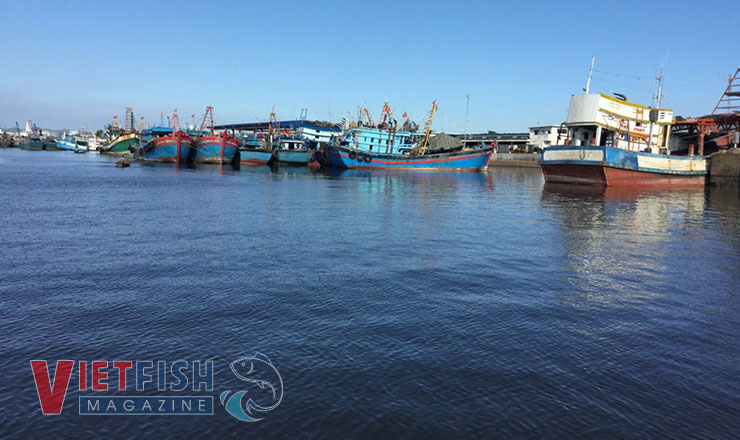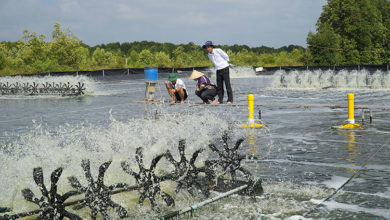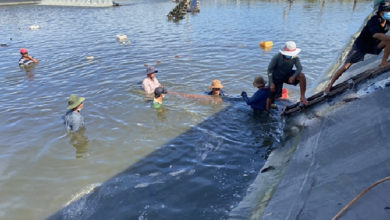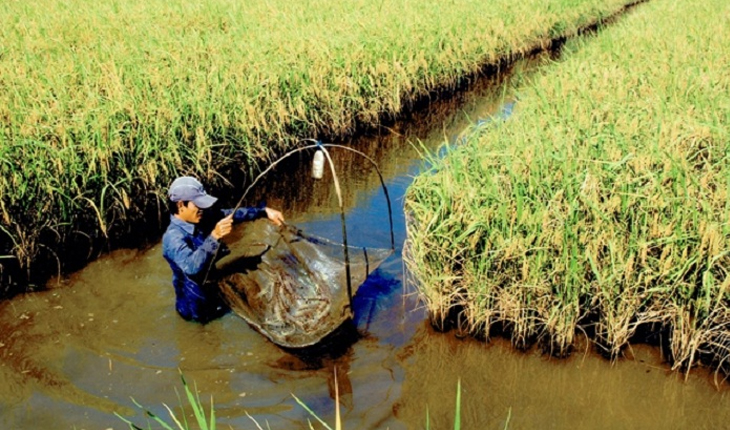Integrated mangrove aquaculture paired with ecotourism
In recent years, Binh Dinh Agricultural Extension Center has been dedicated to promoting environmentally friendly aquaculture models.
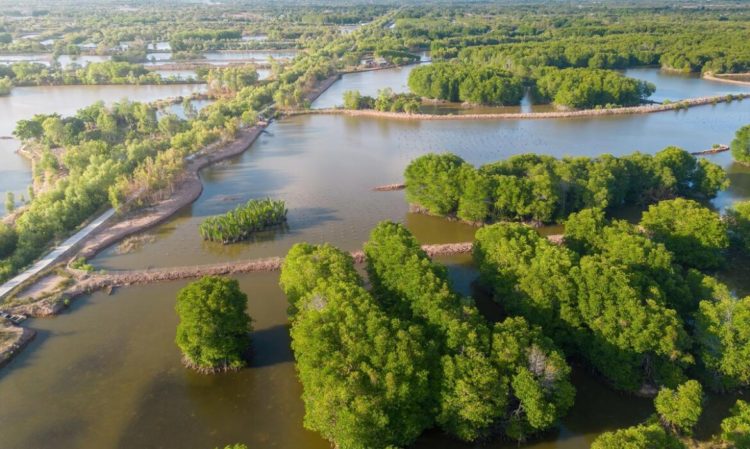
By minimizing antibiotic use, these models not only ensure the production of clean and safe products but also contribute to sustainable development. Among the innovative models being deployed is integrated mangrove aquaculture, which is now being combined with ecotourism to create a unique approach to enhancing both livelihoods and environmental stewardship.
In 2024, the Center will continue its efforts by implementing this integrated model on a 1-hectare shrimp pond owned by Truong Huu Tam in Vinh Quang 2 Village, Phuoc Son Commune, Tuy Phuoc District. The initiative includes 50% financial support for the cost of shrimp seeds, feed, lime, probiotics, and biological products, as well as full technical guidance throughout the farming process.
This model proves particularly suitable for households living in coastal areas near mangrove ecosystems. Several households have already successfully harnessed the potential of mangroves, reducing investment costs while utilizing the water surface to combine aquaculture with sustainable ecotourism development.
The success of this model can be traced back to earlier trials. In 2022 and 2023, the Center introduced integrated aquaculture in several communes, including Phuoc Thuan, Phuoc Son, Phuoc Hoa (Tuy Phuoc District), and Cat Minh (Phu Cat District), yielding positive results. The model’s advantages have motivated many farmers to continue practicing it while assisting others in learning and adopting the same approach.
The integrated system offers various benefits, such as reducing feed costs, limiting the need for chemicals, and promoting stable water quality, which reduces disease outbreaks. Moreover, the mangrove trees in the ecosystem thrive better, contributing to environmental balance.
For example, Tam’s farm stocked 143,000 black tiger shrimp, 1,000 rabbitfish, and 2,000 green crabs in 2024. After five months, the results were impressive, with high survival rates for all species. The shrimp, crabs, and fish thrived without disease, producing commercial sizes of 20g per shrimp, 250g per crab, and 300g per fish. This led to a total yield of 1,773 kg and brought Tam’s family over 125 million VND in profit per hectare.
Tam shared that although the annual profits from integrated farming may not surpass those from intensive shrimp farming, the system is much more stable and resilient, especially against diseases. He also emphasized that, by not using chemicals or antibiotics, the products are clean and highly valued by consumers.
Another significant advantage of this integrated approach is year-round harvesting. Farmers can thin out species as they reach commercial size while continuing to restock, ensuring a continuous supply to meet market demand. Additionally, this model opens up ecotourism opportunities, as visitors can experience the scenic mangrove ecosystem firsthand. Tourists can engage in activities such as paddling, net casting, and fishing, and then enjoy freshly prepared seafood caught directly from the farm.
By combining the potential of mangroves with aquaculture, these models provide not only new livelihoods but also increased income for local communities. The focus on clean and safe products has also opened doors for the development of ecological shrimp products, ensuring long-term sustainability for local farmers.
Binh Dinh province holds significant potential for expanding this model, with various areas such as Phuoc Son, Phuoc Hoa, Phuoc Thuan (Tuy Phuoc District), Cat Minh (Phu Cat District), and My Chanh (Phu My District) identified as promising sites for replication.
As environmental pollution and disease risks continue to rise, the integrated mangrove aquaculture model combined with ecotourism is increasingly recognized for its sustainability, environmental friendliness, and adaptability. To promote its widespread adoption, local authorities should focus on raising public awareness, encouraging farmers to adopt this approach, and expanding the model to more regions. This will not only provide more sustainable livelihoods for farmers but also help protect and preserve the vital mangrove ecosystems for future generations.
VFM


